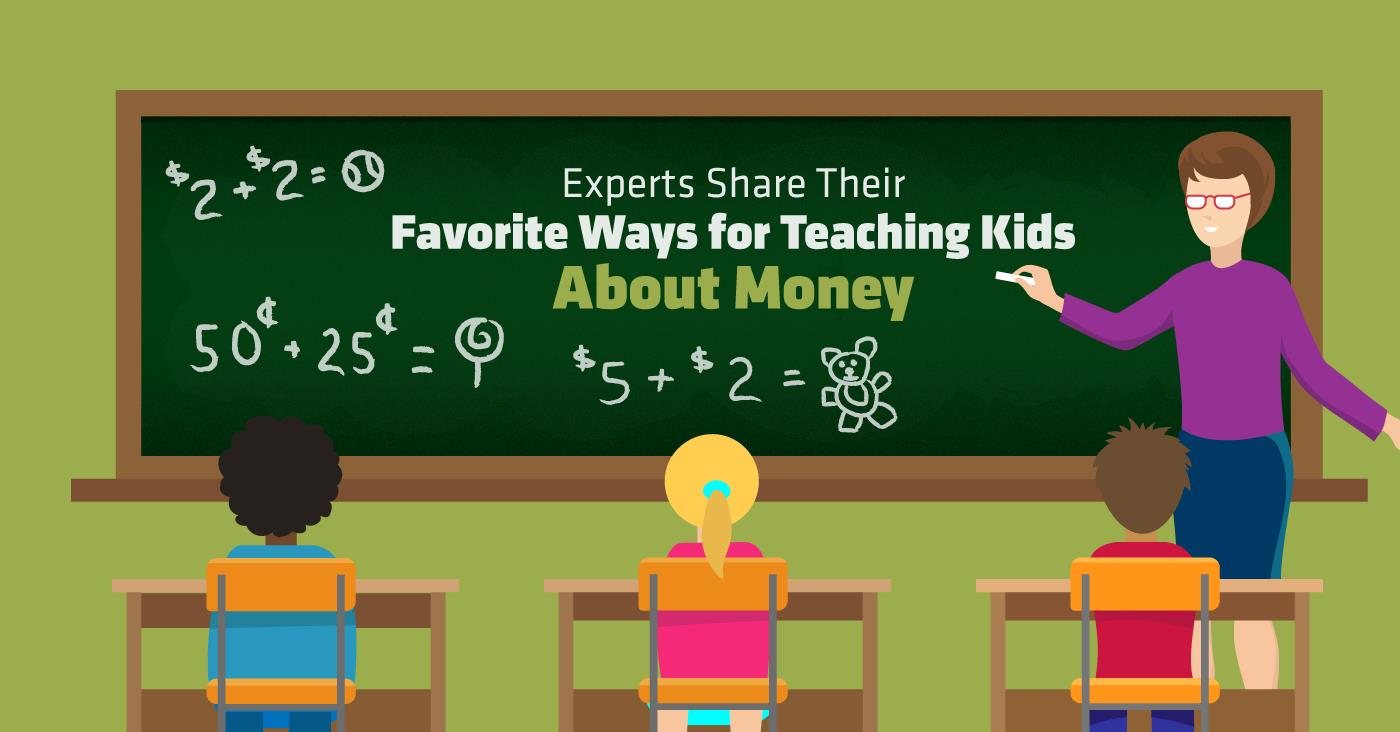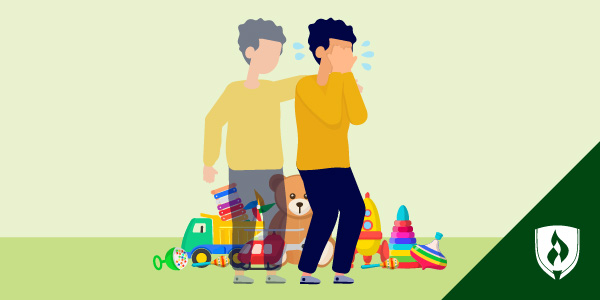Experts Share Their Favorite Ways for Teaching Kids About Money
By Megan Ruesink on 08/22/2017

Money. It makes the world go ‘round and you can’t avoid it. As parents, teachers and guardians, you know that teaching kids about money is one way to help prepare them for successful future. But it’s hard enough to fit in the academics, activities and other life lessons that need to be taught as well. Trying to devise ways to develop healthy fiscal habits is just another item on the growing list.
We’re here to help with some of the heavy lifting. We consulted with a variety of experts to compile a list of eight tips and techniques for teaching kids about money. It might surprise you how much fun it can be and how well your kiddos take hold of financial responsibility as you implement some of these time-tested strategies.
8 great ways to teach your kids about money
Money has an impact on nearly anything we do as a society. That’s why it’s such an important concept for kids to understand. The following tips and strategies will give your child a much better grasp of how money works.
1. Create a list of chores and wages
“Kids don’t necessarily grasp that what you do all day while you’re away from home is what allows you to put food on the table,” says Pamela Yellen, financial investigator and best-selling author of Bank on Yourself. “Help them understand how you earn money—and let them earn some of their own.”
She suggests creating a list of “kid-friendly” chores with prices attached, and limits based on how much you can afford to pay. For really little ones, picking up sticks in the yard or taking out the trash are easy places to start.
This approach helps children understand the value of labor and how money is earned.
2. Choose a ‘buy on your own’ category for your kids
Too often parents end up purchasing everything for the kiddos thinking that it’s the only way and that it’s their duty to do so. Instead, Dr. Crystal I. Lee, licensed psychologist and owner of LA Concierge Psychologist, suggests parents pick a category of items that the child must use their own money to purchase what they want.
Obviously, choosing a “want” vs. need category would be most appropriate and helping to first provide a way for the child to earn money of their own is what makes this work. For most situations, toys are an excellent category for kids to focus their budgeting on.
3. Remember to occasionally use cash
“Kids don’t necessarily make the connection between money and the groceries, clothes and toys that show up in your home—especially if they only see you take that plastic thing out of your wallet at the store,” says Yellen.
She suggests letting your child see you use cash when you’re at the store, and, depending on their age, allowing them to count out the coins or bills needed for a small purchase. This helps cement money as a tangible, not abstract, concept.
4. Make ‘Spend, Save and Share envelopes’
As your child earns money from chores or receives money as a gift, help them see there are different categories that money falls into. Some money can be spent right away, but other money should be saved and given away to good causes.
“Have your child make colorful envelopes … and every time they receive money, have them immediately divide it into these envelopes,” says Yellen.
This gets children to think about their financial priorities and how they want to budget their money. Better yet, the “Share” envelope can help reinforce the value of helping others.
5. Play fake money games
Everybody loves a lively round of Monopoly, but young children might not be ready for that level of activity. Setting up a mock store with price tags, paper money and a mini cashier counter can be a great way for them to practice using money and purchasing wisely. Make sure to give them proper change and help them count the bills out correctly while engaging them on what they plan to use their “purchase” for.
“Kids get a kick out of using the pretend money to make purchases, and it gives a good lesson about saving and investing,” says Dr. Lee.
6. Distinguish between wants and needs
Many experts recommend that parents talk to their kids about the differences between wants and needs.
“The parent should let the child know that they need to wear clothes to school but they want the latest fashionable sneakers to wear to school,” says Rich Weinstein of Money Masters, Inc.
Because this can be a hard concept for young ones to grasp, creating a visual like flashcards of items that are wants (toys, gum, video games) and items that are needs (food, shelter, water) is a great way to start teaching the difference between the two.
7. Create a budget and goals
Creating a budget and purchasing goals with your children is an important way to teach them about short-term savings and delayed gratification.
“With our oldest daughter, we started by having her list the things she wanted to buy,” says Clint Hodgdon, Director of Financial products at Brightpeak Financial. “Next, we told her how many dollars each item costs. Then we had her put them in order from most wanted to least, which helped us explain saving. She could get item #3 in a week, but would have to wait three weeks to get item #1.”
8. Introduce interest
The easiest way to do this with young ones is to open a bank account. Often though, savings accounts will have such low interest rates that children may not pick up on the fact that their money is growing for a while.
Another way to demonstrate this is to set a dollar goal for your children (e.g., $20) and whenever they add another $20 to their savings, you supplement with $2. As the children get older, you can explain how long-term saving options like 401Ks and other retirement accounts act in much the same way.
Help make 'cents' of it all
Teaching your kids about money is just one of many important ways you can help to prepare your children for a successful future. Your young ones are in an opportune time in their development, and it’s so important to provide them with all the tools and resources they’ll need to succeed—including early childhood education. If you’d like to learn more about why early childhood education is crucial to child development, check out our article, “4 Reasons You Can’t Ignore the Importance of Early Childhood Education.”
RELATED ARTICLES:




